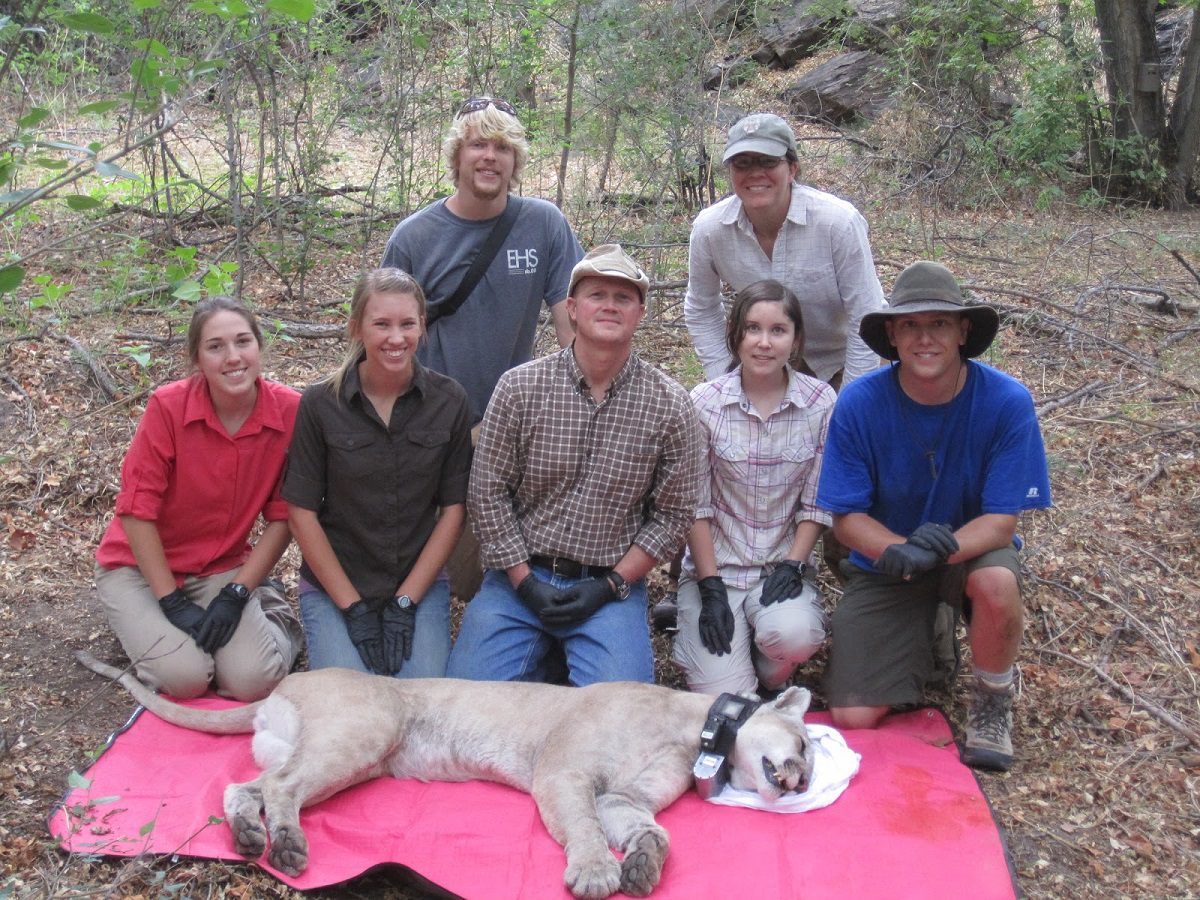Analyzing the diet of mountain lions

In the more than 10 years Furman’s Travis Perry has conducted research on mountain lions (puma concolor) in New Mexico, the biology professor continues to unearth answers about the big cats—their population density, hunting habits, and variety in their diet. It’s the latter question Perry and student researcher Mary Stone are targeting in the field and the lab, because understanding the full range of the puma’s diet is the beginning of determining its impact on ecosystem ecology.

Travis Perry, Department of Biology
In the wilds of New Mexico, pumas are captured, sedated, and outfitted with Global Positioning System (GPS) collars—a whole other story in its own right. Once the cats are collared, the tracking system sends signals every two hours, which indicate their whereabouts and offer clues about what they’re eating.
Says Perry, “So if we see several location fixes stacked on top of each other, then we know the mountain lion has spent several hours in one spot, and that almost always indicates it has made a kill.”
The GPS location typically reveals that the prey item is something big, like a deer or elk, says Perry. But the shortcoming of data gleaned from GPS collars is that large prey is only part of the puma’s diet. What’s missing from the dietary rubric are the small prey items like rodents, bobcats and other creatures—the quick snacks it forages along the way.
“So the best way to get a complete picture of the mountain lion diet it to actually see what comes out the other end,” says Perry. “What we are hoping to do is use genetic markers with puma scat to identify all the prey items in the diet,” he says.
During the summer of her junior year, senior Mary Stone collected puma scat samples in New Mexico, and then she brought them back to Furman for analysis. “We used commercial DNA isolation kits to extract DNA from the samples,” says Stone.
Perry, who leads the Wild Semester course at Furman, says the need for this kind of research is underscored by 20th century history. He points to the fallout of allowing the extermination of the gray wolf in Yellowstone National Park in the 1920s.
With a decline in an apex predator like the gray wolf came a domino effect known to ecologists as a trophic cascade. Without their primary predator, elk populations exploded, which led to overgrazing of willows and aspens needed by beavers for food, shelter and dam building. Beavers almost became non-existent in the northern range. Dams eroded, turning marshy ponds into streams. And with heavy losses of willows and aspens, stream erosion ensued, affecting many plant and animal species. Still other cascades followed touching the antelope, red fox, rodent, and bird populations.
“The presence of a large predator like the mountain lion changes the entire landscape by altering vegetation and changing the community in which other animals live . . . And so one of the ways mountain lions might be having a really big impact on the landscape is by eating smaller predators like coyotes and bobcats that eat smaller mammals like rabbits and rodents.”
Stone, a self-described cat person, says she never pictured herself doing genetic analysis in the lab. “But I’ve always had a general interest in biology as well as outdoor activities. The fieldwork part of the project over this past summer required me to hike to GPS points, and hiking is a strength of mine . . . I got the chance to do a couple of short backpacking trips to access kill sites, and one of the tough things about finding mountain lion scat is that cats can go anywhere . . . so a mountain lion kill can be anywhere. Pretty much all of the hiking we did was off trail and the rocks and plants in New Mexico are all pointy. It was challenging and fun at the same time,” says Stone.
Stone, who plans to go on to graduate school after leaving Furman says, “After doing fieldwork this summer, I realized that I particularly enjoy being outside and collecting data . . . I hope to work on other ecological projects in the field.”
Perry, a 1992 Furman graduate and faculty member since 2000, will be “off the grid” through 2015 teaching Wild Semester in remote areas of New Mexico and South Africa. He thrives on engaged teaching, giving students first-hand experience in the subject matter. He says, “More than any others, these kinds of academic experiences change lives.” He has introduced students to the wilderness of New Mexico, the South African bush, the tropical forests of Costa Rica, and the natural environments of South Carolina. Perry believes his greatest professional achievement as an educator has been the design and implementation of Furman’s Wild Semester.
Learn more about the Furman Cougar (a.k.a. Puma) Project at https://www.facebook.com/furmancougarproject.